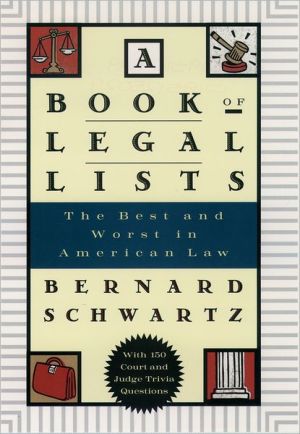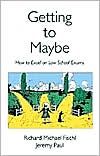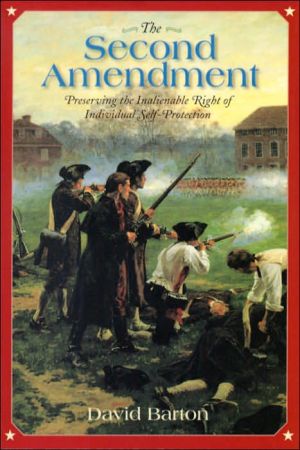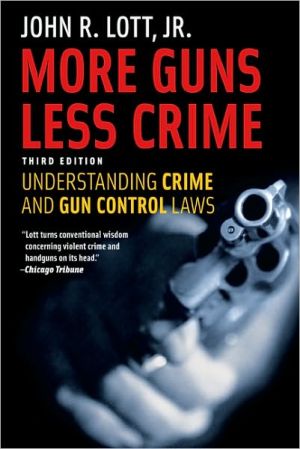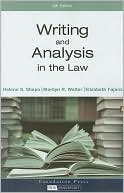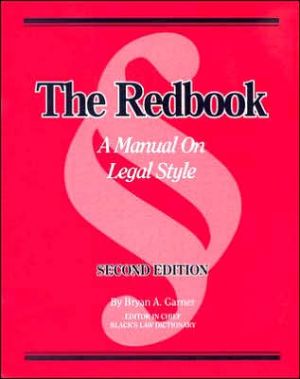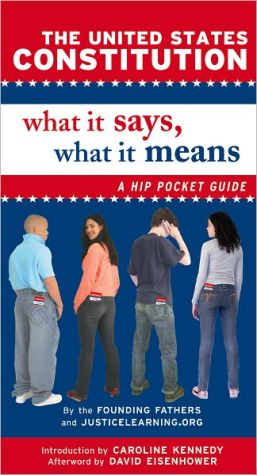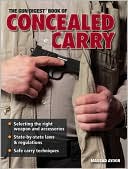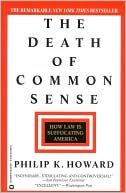A Book of Legal Lists: The Best and the Worst in American Law with 100 Court and Judge Trivia Questions
Who are the top ten greatest Supreme Court Justices of all time? Who are the worst ten? Which Supreme Court decision helped lead to the Civil War? What are the ten greatest and worst Supreme Court decisions? What are the ten best courtroom movies? Who was the last to use the Supreme Court spittoon? Who was the first Justice to wear trousers beneath his Supreme Court robes?\ From John Marshall, the greatest Supreme Court Justice, to Alfred Moore, one of the worst, Bernard Schwartz's A Book of...
Search in google:
Who are the top ten greatest Supreme Court Justices of all time? Who are the worst ten? Which Supreme Court decision helped lead to the Civil War? What are the ten greatest and worst Supreme Court decisions? What are the ten best courtroom movies? Who was the last to use the Supreme Court spittoon? Who was the first Justice to wear trousers beneath his Supreme Court robes?From John Marshall, the greatest Supreme Court Justice, to Alfred Moore, one of the worst, Bernard Schwartz's A Book of Legal Lists—the first ever compiled—provides the Ten Bests and Worsts in American law (and also includes answers to 150 trivia questions about the legal world). The lists include the greatest dissents and Supreme Court "might have beens;" greatest non-Supreme Court judges (Lemuel Shaw, number one on the Greatest list, played a prominent role in recasting common law into an American mold); greatest and worst non-Supreme Court decisions; greatest law books; lawyers (including Alexander Hamilton, Clarence Darrow "Attorney for the Damned", and Abraham Lincoln); trials; and greatest legal motion pictures. Each list entry has a short essay by Schwartz explaining why it is a best or a worst, and it is in these essays that we gain a wealth of information about the legal world. We learn, for instance, that Sherman Minton, number ten on the Worst Supreme Court Justices list, was such a nonentity that he may be best remembered as the last to use the spittoon provided for each Justice behind the bench. Before he became Chief Justice, William H. Rehnquist was known for playing Trivial Pursuit on the bench, Oliver Wendell Holmes wrote 873 opinions for the Court (the most in its history), and Roger Brooke Taney, number ten on the Greatest Supreme Court Justices list, was the first Chief Justice to wear trousers beneath his robes (his predecessors had always given judgment in knee breeches).Stretching back to the early 1700s, the law and the judges who interpret it have maintained a steady presence in our lives—sometimes for better, sometimes for worse. From disappointments like Plessy v. Ferguson (number two on the Ten Worst Supreme Court Decisions list), which gave the lie to the American ideal "that all men are created equal," to lesser known but no less important decisions such as the 1933 United States v. One Book Called "Ulysses", (number nine on the Ten Greatest Non-Supreme Court Decisions) the landmark First Amendment case that eased the law governing censorship, Bernard Schwartz provides legal experts and non-experts alike with entertaining information in a format that can be found nowhere else. Library Journal A Book of Legal Lists makes no pretense of being "the" book on the subject. It is not the work of a committee but the personal selections of University of Tulsa law professor and constitutional law scholar Schwartz. Schwartz presents a point/counterpoint of the ten best and ten worstthe best and worst Supreme Court justices, non-Supreme Court judges, opinions, dissents, opinions, etc.in all categories but lawyers, legal movies, and trials, where only the best are cited. The lists themselves are interesting and thought-provoking, but the real strength of the book lies in short annotations that present readable, concise, and authoritative background for each item. The book is capped off with a challenging list of 150 legal trivia questions. McWhirter's The Legal 100 is at once more limited and broader in scope. It focuses exclusively on people, listing "individuals who have most influenced the law" whom the author has chosen on the basis of questionnaires submitted by law professors. As one would expect, many of the same names appear in both compilations. The Legal 100 gives itself the latitude to include more people, and the reader will find more extensive listings of lawyers, law teachers, and legal philosophers. Each entry comes with a short biography and an assessment of the listee's contribution to the law. Both books are highly recommended as ready reference for all libraries.Patrick Petit, Catholic Univ. Law Lib., Washington, D.C.
1Ten Greatest Supreme Court Justices32Ten Worst Supreme Court Justices283Ten Greatest Supreme Court Decisions474Ten Worst Supreme Court Decisions685Ten Greatest Dissenting Opinions876Ten Greatest Supreme Court "Might Have Beens"1087Ten Greatest Non-Supreme Court Judges1298Ten Greatest Non-Supreme Court Decisions1539Ten Worst Non-Supreme Court Decisions16910Ten Greatest Law Books18911Ten Greatest Lawyers21012Ten Greatest Trials23713Ten Greatest Legal Motion Pictures260Trivia QuestionsTrivia Answers
\ Thomas G. WalkerHaving participated in two editions of the SUPREME COURT COMPENDIUM (Epstein, et al, 1996), it should come as no surprise that I like lists. I know I am not alone in this affinity. Lists, especially those that rank the best and the worst of anything, always generate interest and controversy. The latest book from the pen of the prolific Bernard Schwartz is devoted to thirteen legal lists. Each list constitutes a focal point for a chapter, and each chapter follows the same format. Schwartz first ranks the ten greatest or the ten worst of a particular legal phenomenon, and then devotes the rest of the chapter to explaining and defending his choices. This book is more fun than scientific. Schwartz acknowledges that the rankings are "personal." They are based on informed, but subjective, judgment, not unlike debates over who was the greatest nineteenth century composer or who should play in baseballÆs All Star Game. In spite of the nonscientific nature of the rankings, the opinions expressed in this volume are not to be minimized. Schwartz, Chapman Distinguished Professor of Law at the University of Tulsa, is a prominent scholar with more than fifty years dedicated to the study of law and the Supreme Court. Schwartz begins his book with chapters devoted to the greatest and the worst Supreme Court justices. He has plenty of company in attempting to identify the greatest justices. At least eleven previous "greatest" lists have been published (see Epstein, et al., 1996, table 5-8). SchwartzÆs list differs only marginally from the ratings provided by others. In order, he ranks J. Marshall, Holmes, Warren, Story, Brennan, Brandeis, Hughes, Black, Field, and Taney as historyÆs best. None of these is an unreasonable choice for inclusion in the top ten. Schwartz provides ample argument to establish that each of these jurists had a remarkable influence on the development of American law. The authorÆs treatment of the ten worst Supreme Court justices is a much more entertaining read. He reserves for this list justices who stood for repudiated legal doctrines, failed to provide effective leadership, or were overly partisan, bigoted, rigid, simplistic or "just plain dumb." Alfred Moore leads the list, followed by Whittaker, Vinson, McReynolds, Peckham, S. Chase, Barbour, S. P. Chase, Butler and Minton. Justice Moore, therefore, was not only the smallest justice (at four and a half feet tall and less than 90 pounds) but also, according to Schwartz, the worst. ItÆs hard to make an argument to save the justice from North Carolina. He wrote only one opinion (of one page) in four years of Court service; and when MARBURY v. MADISON was argued Moore showed up too late to participate. Charles Whittaker runs a close second to Moore. Schwartz argues that Whittaker may well have been the dumbest and the least decisive justice ever appointed. He quotes Potter Stewart as explaining that Whittaker would leave the conference literally crying, explaining that "Felix used words in there that IÆd never heard of." On one occasion, Frankfurter circulated a satirical, mock opinion in the 1957 censorship case of TIMES FILM CORPORATION v. CITY OF CHICAGO. Whittaker joined the opinion. Frankfurter had to send Whittaker a note that the opinion was a joke. Next comes lists of the greatest and worst decisions handed down by the Court. Determining the greatest decisions, and limiting their number to ten, is a difficult task. SchwartzÆs choices are certainly reasonable with MARBURY leading the list. The others defined the limits of government power (McCULLOCH, NIXON), defended basic liberties (BROWN, MILLIGAN, BAKER), or introduced new constitutional rules in regulating the economy (GIBBONS, GRANGER CASES, JONES & LAUGHLIN STEEL CORP., CHARLES RIVER BRIDGE). Noticeably absent from the list are the more important twentieth century civil liberty decisions (MIRANDA, ENGEL, ROE, GIDEON, MAPP, etc.). The worst decisions are simply the converse of the greatest. Led by DRED SCOTT v. SANDFORD, they either refused to acknowledge basic human dignity (PLESSY, KOREMATSU, BRADWELL, and BUCK) or were terribly out of step with the economic needs of the nation (LOCHNER, HAMMER, ADKINS, CARTER COAL, and HEPBURN). The chapter on the greatest dissenting opinions has an inspirational quality about it. Just scanning the list evokes feelings of appreciation and admiration for some of historyÆs best crafted statements of the law -- all written in the face of a majority in opposition. Any student of the Court has his or her own favorite dissenting opinions, but Schwartz will find considerable support for all of his choices. Benjamin CurtisÆs dissent in DRED SCOTT gets SchwartzÆs nod as the greatest of all dissenting opinions. Holmes and Brandeis lead with three dissenting opinions each on the top ten list. For Holmes, his dissents in LOCHNER, HAMMER, and ABRAMS ranked second, fourth, and fifth, respectively; and BrandeisÆs dissents in WHITNEY, OLMSTEAD, and NEW STATE ICE rated sixth through eighth. Rounding out the ten greatest were HarlanÆs dissent in PLESSY (third), StoneÆs in BUTLER (ninth), and BlackÆs in ADAMSON (tenth). Schwartz then asks the reader to join him in thinking about how history would have been different had certain Supreme Court events not occurred. He calls this his "Might Have Been" top ten. At the top of the list is the appointment of John Marshall to be chief justice. It is hard indeed to imagine how American government in general and the Supreme Court in particular might have evolved had Marshall not assumed the center chair and served for the next 34 years. And, of course, MarshallÆs position easily could have gone to another. After all, John Jay was offered the position first, but he declined. President Adams then seriously considered, among others, William Paterson, who had substantial political support and even the endorsement of Secretary of State Marshall, before finally deciding to nominate the person who was to become the greatest chief justice. Next on the list comes the appointment of Chief Justice Earl Warren and a string of particularly important Court rulings (MARBURY, BROWN, DRED SCOTT, LOCHNER, and BAKER). Strong arguments can be made that history would have been altered had these cases been decided differently. The final three entries on this top ten list are a bit puzzling. All three are Court decisions (ROE, WEBSTER, and MAPP). The puzzle is not that at least two of these decisions (ROE and MAPP) had a considerable impact, but that all three fail make SchwartzÆs earlier list of the best or worst decisions and yet they merit inclusion here. Not all of SchwartzÆs lists deal with the Supreme Court. He includes chapters on the greatest non-Supreme Court judges (led by Lemuel Shaw), law books (the FEDERALIST PAPERS), trials (the Andrew Johnson Impeachment), lawyers (Alexander Hamilton), and law oriented movies (ANATOMY OF A MURDER). SchwartzÆs choice for the greatest non-Supreme Court decision is BAYARD v. SINGLETON (1787), a North Carolina Supreme Court ruling that clearly stated the case for judicial review long before MARBURY. Heading the list of the worst non-Supreme Court decisions is MITCHELL v. WELLS (1859), one of historyÆs most astonishing defenses of slavery. It is a decision ugly in both outcome and rationale. In its opinion the Mississippi Supreme Court characterized African Americans as a "mongrel race" occupying a place "between the irrational animal and the white man" and compared extending citizenship to blacks to giving political rights to "the chimpanzee or the ourang-out-ang." The MITCHELL decision is closely followed by a more contemporary ruling, Judge Brevard HandÆs decision in JAFFREE v. BOARD OF SCHOOL COMMISSIONERS (1983) that the states are not bound by the Establishment Clause. The book ends with 150 trivia questions and answers. Here we learn, among other things, that Sherman Minton was the last justice to use a spittoon on the bench (a practice that terribly upset Harold Burton who sat next to him), that Learned HandÆs first name was really Billings, that Justices Ginsburg and Scalia appeared together in a 1994 opera production, that the 317 appearances by attorney Walter Jones is a Court record, and that Justice Story served as a bank president while he sat on the Court. This section of the book was probably inspired by the answer to Trivia Question #21 which informs us that Justice Rehnquist used to play a version of Trivial Pursuit during oral arguments and often enticed Justice Blackmun to join him. Anyone conversant with the history of American law will appreciate this book. But it is more entertainment than scholarship. There are no footnotes, no references, no bibliography, and no index. No argument is made, no thesis presented. It is simply one scholarÆs set of best and worst lists based on decades of study. Yet the volume contains innumerable facts and anecdotes and covers the broad spectrum of American history. Tucked within its pages teachers of law and the judicial process will find wonderful nuggets of information that can be used to enliven classroom lectures and discussions. Reference Epstein, Lee, Jeffrey A. Segal, Harold J. Spaeth, and Thomas G. Walker. 1996. THE SUPREME COURT COMPENDIUM: DATA, DECISIONS & DEVELOPMENTS. 2nd edition. Washington: Congressional Quarterly.\ \
